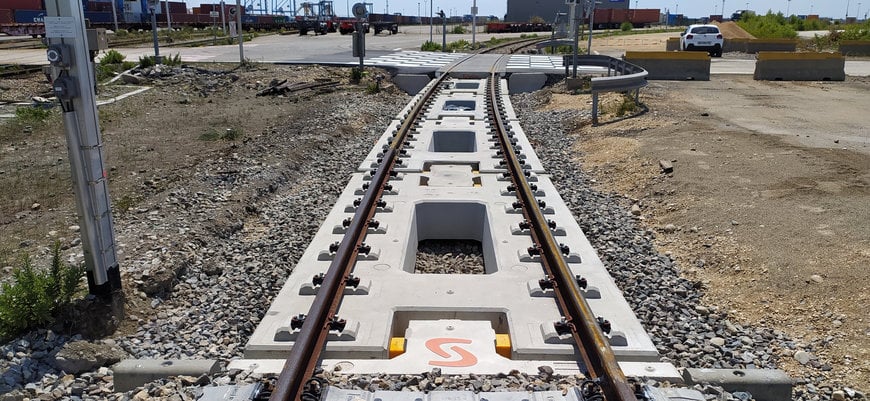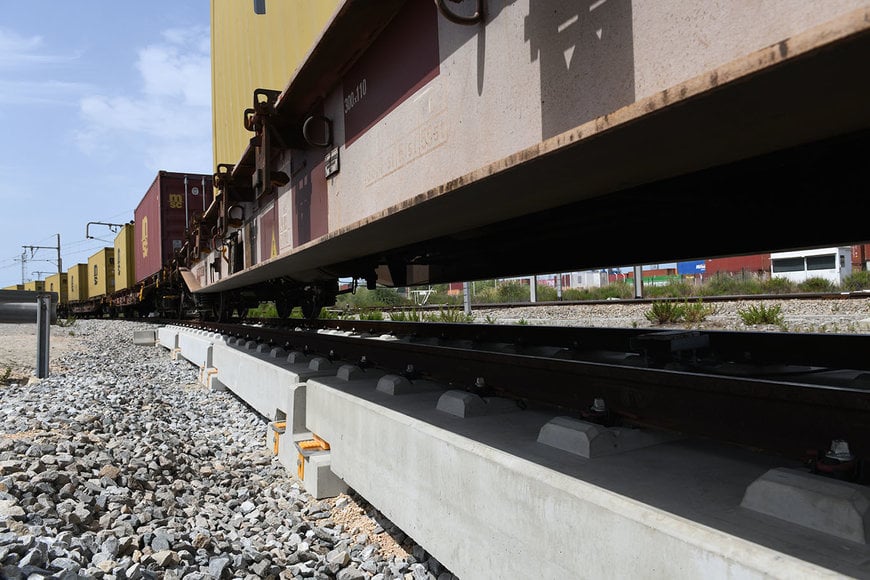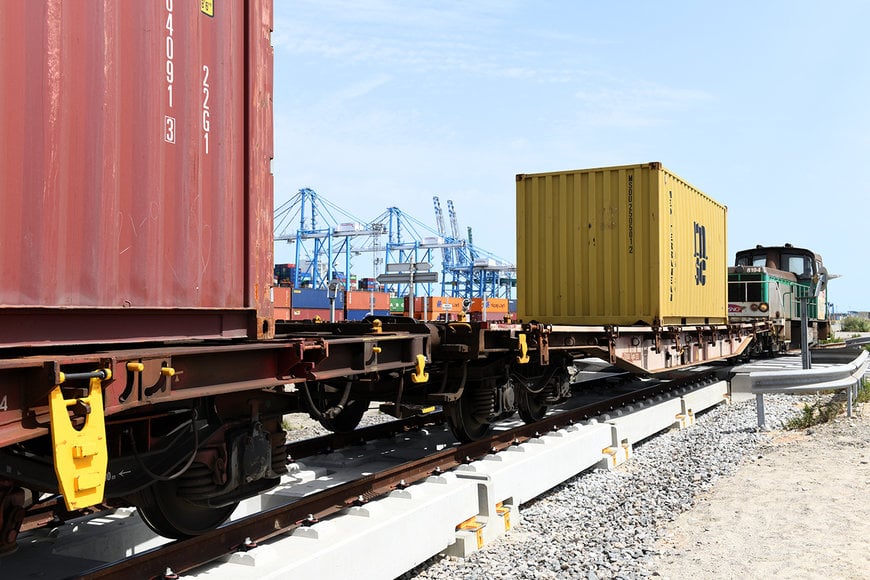railway-international.com
20
'23
Written on Modified on
INSTALLATION OF AN INNOVATIVE RAILWAY TRACK DESIGNED BY SYSTRA IN THE PORT OF MARSEILLE-FOS
Work has been completed on an innovative ballastless track design on the rail network of the Port of Marseille-Fos. This new generation of low-carbon concrete slab track was developed by SYSTRA and its partner STRADAL.

This innovative patented solution is manufactured in France and is unique in the world. It offers numerous advantages in terms of design, installation and maintenance.

SYSTRA has supervised the implementation of an innovative ballastless track design on the rail network of the Port of Marseille-Fos. This 20-metre-long experimental track, a world first, is now open to rail traffic within the port’s right-of-way.
A ballastless track solution tailored to the needs of the Port of Marseille-Fos
As part of its role as infrastructure manager, the Grand Port Maritime de Marseille (GPMM) wishes to develop and improve its rail network (excluding the national rail network), in particular that of the western basins at Fos-sur-Mer. The GPMM is aware of the environmental challenges, the rising costs of maintaining rail track and the limitations of current track-laying techniques, and has decided to focus on innovative processes to regenerate its track.
SYSTRA and STRADAL have designed and patented a new track system on a concrete slab to enable the regeneration and construction of railway lines. This French technology, presented in Berlin at InnoTrans 2022, differs from conventional ballasted track in that its components are interchangeable. These can be laid quickly, offer greater strength and durability, thanks especially to the use of low-carbon concrete, and require less maintenance.

An innovative track solution
Many national or regional railway lines around the world need to be regenerated or renewed in order to maintain their operational performance. These operations require major investment on the part of transport authorities and infrastructure managers. Several technical solutions are available to them: ballasted track, which makes up the bulk of today’s rail networks, and conventional ballastless track techniques.
SYSTRA and its partner STRADAL have co-developed a new generation of low-carbon concrete slab track to meet this need, as well as the construction of new lines, while taking environmental issues into account. This innovative patented solution is manufactured in France and is unique in the world. It offers numerous advantages in terms of design, installation, and maintenance. It offers a lower total cost of ownership than other technical solutions on the market.
This design is for all railway lines, including high-speed lines, whether for passenger transport (High-speed/Regional express trains/Intercity/Metro) or freight transport.
In addition, the track geometry adjustment system integrated into the structure can compensate for platform settlements of up to 100mm in height. Other ballastless track technologies do not have this advantage.
A sustainable solution
The solution is resilient to climatic risks and respects the environment. It is the only ballastless track designed with an entirely prefabricated low-carbon reinforced concrete structure. What’s more, the 10-centimetre rise in the level of the track above the roadbed allows water to run off the surface in the event of flooding, limits silting up of the tracks and allows small animals to pass through, making it a real sustainable solution for protected species. Finally, the design has the same permeability as a ballasted track, which avoids the need to resize existing hydraulic structures in the case of regeneration projects.
Easy and economical to lay, with significantly reduced maintenance
This design does not require the use of sealants and can be laid using existing track-laying equipment, such as gantry cranes or work trains, which are also used to lay traditional ballasted track, as well as ordinary construction machinery, thereby optimising the laying schedule and reducing energy consumption. The fastening systems and rails are the same as those commonly used for ballasted and ballastless track.
Compared with ballasted track, maintenance is considerably reduced and is also non-invasive thanks to the fact that heavy maintenance equipment is not used, which guarantees operators a high level of track availability. This additional track availability time means that the number of commercial trains can be increased if required.
In addition, the condition of the track can be monitored by sensors and connected objects.
Finally, this innovative ballastless track solution is particularly recommended for railway lines with high operating costs and for infrastructure managers encountering difficulties with existing ballastless track systems.
www.systra.com

